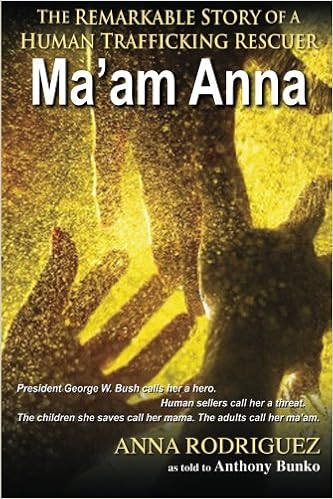A Local Solution for a Global Affliction
by: Unidad (Ning) Bonoan
Be joyful in hope, patient in affliction, faithful in prayer. (Romans 12:12)
As I start to pen this article, the joyous season of Christmas 2020 has arrived in the midst of the ongoing coronavirus tide. At church, Sheila Mae and John did a wonderful narration of the birth of Jesus during our Christmas Eve service at the Church of the Holy Spirit in Safety Harbor, Florida. Just the Sunday before, I witnessed and quickly joined a socially distanced, impromptu thanksgiving celebratory prayer being offered by our parish priest, Fr. Ray Bonoan, at our social hall turned thrift shop extension. The service was for Sheila Mae, who had received her nursing degree from St. Petersburg College a few days prior. So, who are Sheila Mae and John? What do they have in common?
Sheila Mae and John are both in their 20s. They hang out with a group of youth who, like them, are very much goal-oriented in pursuing their career paths and higher education while maintaining current jobs to support themselves and provide assistance to meet their recently immigrated families’ needs. The most noteworthy similarity, however, is that both their dads were victims and are survivors of human trafficking. Without digging deeper, the descriptor pointing toward mature males becoming human trafficking victims didn’t seem to match the general public’s perception of what human trafficking is. That was my mindset before BOCA 39 and before coming face to face with the 13 out of the 50 victims, and the other groups of victims thereafter.
Our church came to know about the Boca 39 case when Fr. Bonoan received a phone call in late 2007 from a member of the ECW (Episcopal Church Women) who had just returned from having attended a United Nations Commission on the Status of Women conference in New York, to inform him of human trafficking victims rescued in the southern part of our diocese. The victims happened to be of Asian descent; hence, the call made to Fr. Bonoan, the Diocesan Episcopal Asiamerican missioner. By 2008 and beyond, the Church of the Holy Spirit (Clearwater Deanery), in partnership with the Florida Coalition Against Human Trafficking (FCAHT), coordinated the transport of 13 of the 50 victims to the Clearwater area and mobilized a multi-agency victim support for: direct victim assistance, awareness training, and public education and advocacy.
BOCA 39 is the case of the United States versus Sophia Manuel, 41, and Alfonso Baldonado, Jr., 46, the married owners of Quality Staffing Services Corporation in Boca Raton, Florida, who were found guilty of the crime of human trafficking and were sent to prison in 2010.
The indicted couple brought 50 Filipino workers with H-2B visas to Boca Raton, Florida, over a staggered time frame before and up to 2008. They made false promises and enticed workers to incur debts to pay for up-front recruitment fees. Upon arrival in the United States, between July 2006 and June 2008, the workers were crammed into a deplorable single-family house in Boca Raton.
The couple confiscated the workers’ passports, and they controlled and restricted their freedom of movement and communications with outsiders. They were kept from any outside communication and coaxed into believing there was no way out except working for measly wages, if any at all, as opposed to the lucrative wages they were promised. They threatened to have workers arrested and deported, knowing workers faced serious economic harm from debt bondage as well as possible incarceration for nonpayment of debts in the Philippines. In addition to threats with arrest and deportation should they try to leave, they were not given enough food or water.
Workers were only fed once a day, so when given the opportunity, workers who were lucky to be sent for work at certain days were forced to steal food from work to bring back to the others who were fighting hunger pangs. When one worker complained that the drinking water was bad, the couple threatened to offer them acid instead, according to the indictment. The indictment also said that the workers were denied adequate medical care. One worker broke his wrist and didn’t see a doctor for 10 days. Another worker, suffering from stomach pain, spat up, blood but was kept from seeing a doctor. (Jerome Burdi and Erika Pesantes, Sun Sentinel)
All 50 workers did fit the bill as victims of human trafficking, or modern-day slavery, which is defined as the recruitment, harboring, transportation, provision, or obtaining of a person for labor or services, through the use of force, fraud, or coercion, for the purpose of subjection to involuntary servitude, peonage, debt bondage, or slavery. Trafficking in persons is the acquisition of people by improper means such as force, fraud, or deception, with the aim of exploiting them. (United Nations Office on Drugs and Crimes.) They must have been included as well in the cumulative statistics of the 2017 Global Estimates of Modern Slavery by the International Labor Organization, which states that on any given day in 2016, an estimated 40.3 million people were victims of modern slavery and that forced labor generates $150 billion US in annual profits. Human trafficking is a global phenomenon to which no country is immune. Victims of modern slavery are exploited in every region of the world, compelled into service for labor or commercial sex in the real world of industry and on the pages of the internet.
The forms of human trafficking can be glimpsed at the “United Nations Office of Drug and Crimes 2012 Report,” which mentions that sex trafficking is more common in Europe, Central Asia, and the Americas; labor trafficking types are more common in Africa, the Middle East, South Asia, East Asia, and the Pacific; and that other forms of trafficking such as begging, removal of organs, and forced marriage were also detected in some countries.
Additional information in the same report alludes to key findings that approximately 60% of victims are women (75% if including girls); 27% are children (two out of three are girls); and that traffickers are generally males of the victim’s native country. Overall, more women and foreign nationals are involved in human trafficking than other crimes. Between 2007 and 2010, 50% were trafficked across borders, 24% were transferred inter-region, and 27% were domestic trafficking cases.
The “2020 Trafficking in Persons Report: United States” by the US Department of State documents that “Human trafficking cases have been reported in all 50 states and the District of Columbia. Traffickers compel victims to engage in commercial sex and to work in both legal and illicit industries and sectors, including in hospitality, traveling sales crews, agriculture, janitorial services, construction, landscaping, restaurants, factories, care for persons with disabilities, salon services, massage parlors, retail, fairs and carnivals, peddling and begging, drug smuggling and distribution, religious institutions, childcare, and domestic work. Individuals in the United States vulnerable to human trafficking include: children in the child welfare and juvenile justice systems, including foster care; runaway and homeless youth; unaccompanied foreign national children without lawful immigration status; individuals seeking asylum; American Indians and Alaska Natives, particularly women and girls; individuals with substance use issues; migrant laborers, including undocumented workers and participants in visa programs for temporary workers; foreign national domestic workers in diplomatic households; persons with limited English proficiency; persons with disabilities; LGBTI individuals, and victims of intimate partner violence or domestic violence. Some U.S. citizens engage in child sex tourism in foreign countries.”
So, how do these human trafficking “guestimates” and statistics play out in our current “masked” COVID-19 environment? The COVID-19 pandemic has devastated human lives, the global economy, and educational systems. At the same time, criminal enterprises have evolved in the face of stay-at-home lockdowns and travel bans, and the UN Office on Drugs and Crime warns that criminals will use the pandemic as an opportunity to exploit those economically disaffected. As criminal “entrepreneurs,” crime networks are looking to further exploit and profit off of the most vulnerable, becoming ever more creative in their illicit endeavors.
The International Labor Organization estimates that the lockdowns of the 2020 pandemic have affected a staggering 2.7 billion workers or 81 percent of the world’s workforce. At the peak of the lockdowns in April 2020, according to the UN Educational, Scientific and Cultural Organization, school closures in 194 countries affected 90 percent of the world’s students at the pre-primary, primary, secondary, and tertiary education levels. Given the enormous financial hardship on families, the mass movement of people, and the closing of schools (through which many social interventions are delivered to those most at risk), human trafficking can flourish in this current environment. (Christina Bain, Louise Shelley, The Evolution of Human Trafficking During the COVID-19 Pandemic)
So, truth be told that human trafficking is a global human affliction but can and only be eradicated through the mercy and grace of God, one victim at a time; one perpetrator turning himself or herself around at a time; one individual, one community praying intently and showing compassionate action at a time. God already has provisions for our needs to combat this evil darkness in humanity. He has ushered our church in Safety Harbor to answer the call to assist in the restoration of the rescued human trafficking victims, encompassing a multi-faceted response which included: safe housing, meeting basic needs of food and clothing, education, health care and medical referrals, legal counsel, societal integration, and pastoral and spiritual care.
It is also a God’s incidence (not coincidence) that shortly before answering the call to this ministry, our church became the recipient of a new passenger transport van granted by the United Thank Offering of the Episcopal Church. It certainly was put to good use right away! In addition, God continues to provide forums such as this as a platform for sharing ministry and spreading the Good News.
Through the US government, our Lord provided the federal witness protection program as well as the Trafficking Victims Protection Act of 2000 (which later on was reauthorized as the Wilberforce TVPA, named after William Wilberforce (1759-1833), a British parliamentarian who untiringly worked towards the abolition slavery, like Abraham Lincoln (1809-1865) in the United States). Under the TVPA, the victims were able to apply for a T-visa, which later on allowed them to apply for permanent resident status and petition for their families to join them in the United States.
Even though the rest of the story is now history, Sheila Mae, John, and the rest of the survivors and their families, together with our local church congregation, continue to pray unceasingly and listen to God’s calling toward the ministry against human trafficking: the provision of direct victim assistance; public awareness, education, and training; and/or victim advocacy.
January 2021 was proclaimed as National Slavery and Human Trafficking Prevention Month.
How are you being called?
TRAFFICKING HOTLINE: 1-888-373-7888
TEXT “BEFREE” (233733)
Other Important Reads/Leads
Polaris Human Trafficking: polarisproject.org
Alliance 8.7 Partnership: Alliance87.org
United Nations: unodc.org
Thistle Farms: thistlefarms.org
Ma’am Anna: The Remarkable Story of a Human Trafficking Rescuer by Bunko, Anthony, Rodriguez, Anna (2013)

